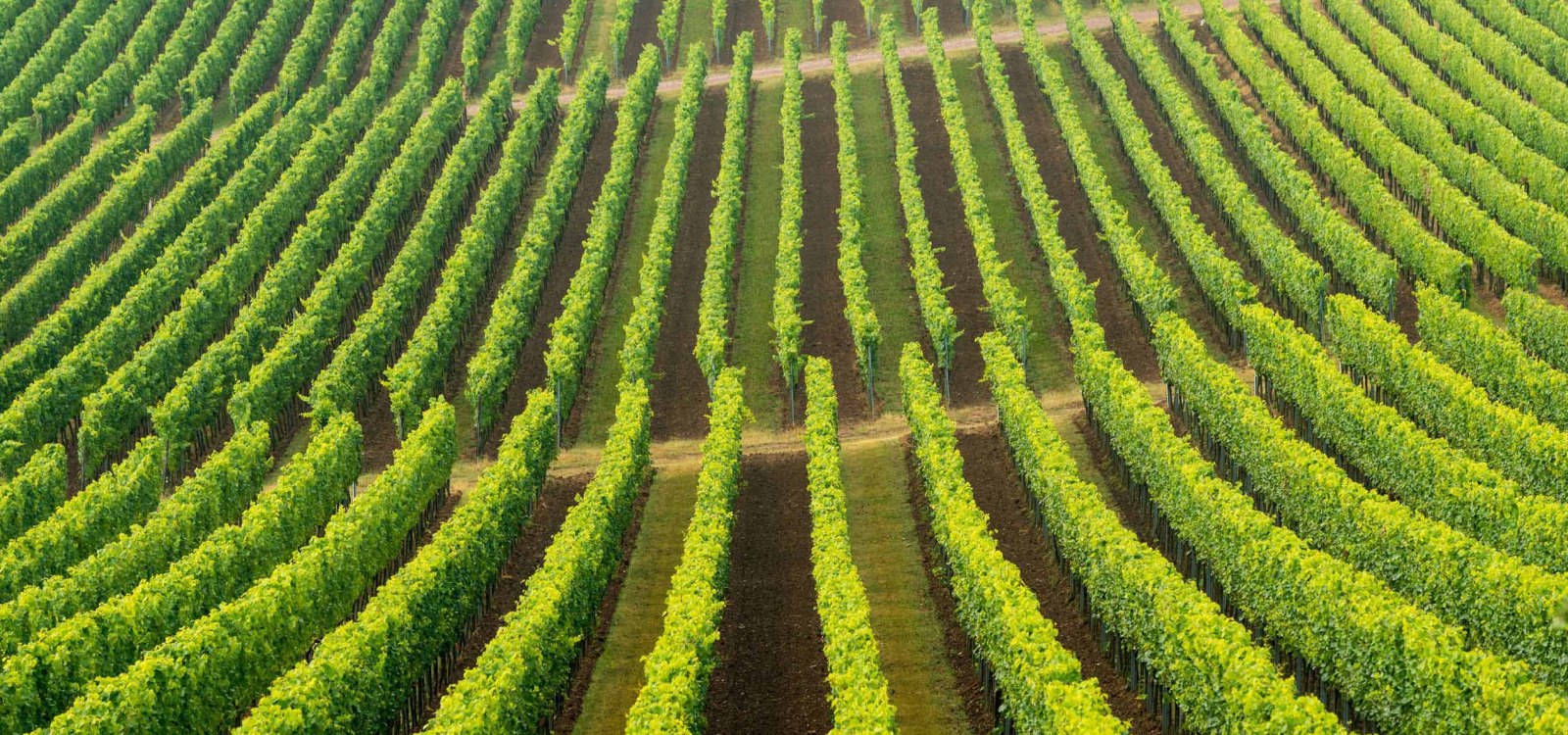
searchMenu



The only vineyard with a French name Hard to believe, but true: This single vineyard is the only one with a French name. It was owned by the Huguenot family La Roche from Erbes-Büdesheim. The dialect spoken in Rheinhessen actually used many French words. In the center of the single vineyard: one of the most famous landmarks of Rheinhessen, the trullo at the Geistermühle. A small, whitewashed round building. There are two of them in Flonheim alone. They are unique for the Rheinhessen region. Rieslings and Pinot Noirs of great renown…

The location is an early property of the Counts of Kinningen.

Sun, tower and vines At an altitude of up to 225 metres lies the Sonnenberg. As always, the name refers to the sun-drenched location. A southern exposure with maximum sunlight. A wide variety of grape varieties grow here on sand and clay marl as well as limestone. The modern Vendersheimer Turm with glass terrace and 360-degree roof terrace, in the middle of the vineyard can be seen from far away. A large table invites you to take a rest. Also for pilgrims, as Rheinhessen St. James Pilgrims' Way passes directly by the tower. > Other…

The name is based on the ownership of the Marian altar or Liebfrauen monastery. But which one? Everyone familiar with the region knows the Liebfrauenkirche in Worms, today still a single vineyard. But Volxheim lies at the other end of Rheinhessen and today actually is part of the district of Bad Kreuznach. Regional history reveals, however, that it once belonged to Kurmainz and there was once a Liebfrauenkirche there as well. IDoes that explain the name? The southern exposure with deep, very chalky, clay-loam soil is ideal for full-bodied…

The location was mentioned in 1521 with the name "uff the Heiligenberg". Legend has it that the martyrs died here for the worship of St. Boniface.

The location was mentioned in 1331 with the name "uf der Heroes". Hell means a slight slope. In West Central Germany, this hall designation is very common.

Neo-Gothic chapels and a church roof made from vines A chapel on a mountain. That's how easy it is to explain some of the vineyard names. Is it not? It can be read that a chapel once stood on the mountain. Today, the chapel "Zum Heiligen Blut" - part of the neo-Gothic Villa Heiligenblut complex - can indeed be found on the edge of the single vineyard. However, it was only built in 1890. Built or planted even later: the "Weinkirche", a church made of vines. The romantic crenellated round tower was built in 1887 as a lookout tower and belongs…

The location designation is based on ecclesiastical property.

The word “Kehr” is a synonym for loop or serpentine. The plough turn as an interpretation for this can be ruled out, books say. The name of the vineyard is interpreted as a bend in the path. But don't all terrain forms have bends? Well then. The first mention of the site dates back to 1465. Different vines grow on loess, heavy clay and loam soils and limestone. The wines, especially Rieslings, are full-bodied and extremely dense, fruity and juicy. A vineyard hut with benches and a table offers a rest and a view.

Hiking, swinging and wine-tasting in the little garden The name of the vineyard goes back to the Welgesheim church or an old parish estate. The Lorsch Codex states that Welgesheim already had its own church in 1290. It is unclear why the garden was diminished to "Gärtchen" (English: little garden). After all, the single vineyard has 72 hectares - and is thus not one of the smallest single vineyards. Various vines grow on clay marl. Hikers and cyclists will find a vineyard swing, loungers and a wine table for groups. Ideal for picnics…
Rheinhessenwein e.V.
Otto-Lilienthal-Straße 4
55232 Alzey
E-Mail: info@rheinhessenwein.deRheinhessenwein e.V.
Otto-Lilienthal-Straße 4
55232 Alzey
E-Mail: info@rheinhessenwein.de